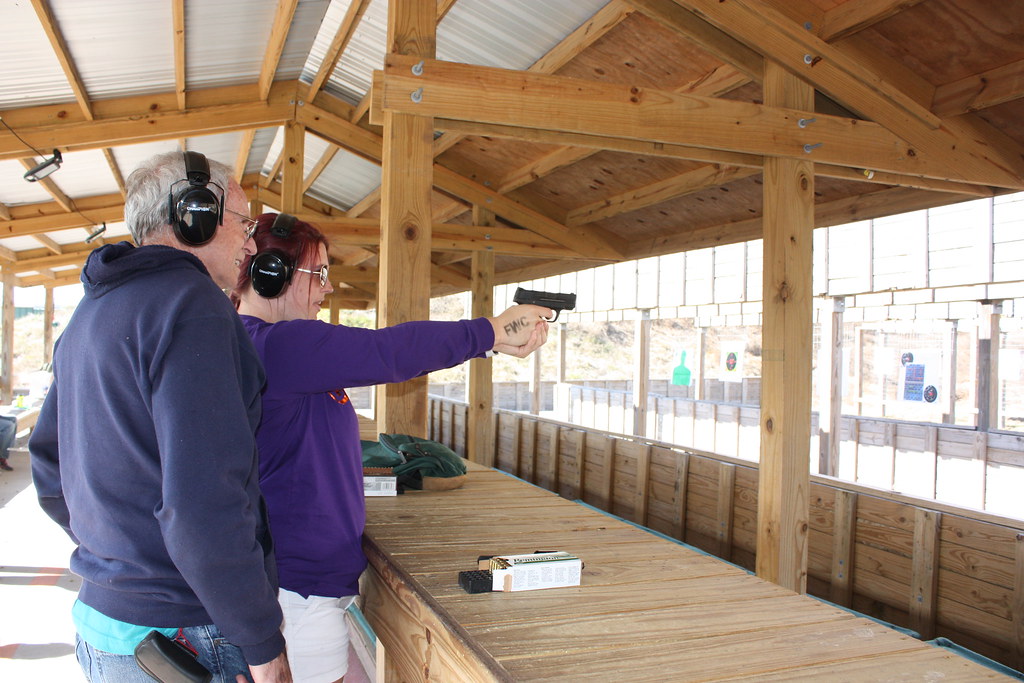Guns & Weapons
11 Steps to Make Hunting Handguns

Hunting handguns are firearms specifically designed for hunting purposes. Unlike traditional rifles, hunting handguns provide hunters with increased mobility and versatility. They are lightweight and easy to carry, allowing hunters to navigate through dense forests and rugged terrains with ease. Moreover, hunting handguns come in various sizes and calibers, offering hunters the ability to select the one that suits their specific needs.
Hunting has been a time-honored tradition for generations, and as technology advances, so do the tools available to hunters. One such tool that has gained popularity in recent years is the hunting handgun. These compact and powerful firearms offer hunters a unique set of advantages, making them a valuable addition to any hunter's arsenal.
RELATED: Hunting Crossbows: Top 7 Choices for Hunters
How to Make a Hunting Handguns?
Building your own hunting handgun can be a rewarding and fulfilling experience for firearm enthusiasts. Creating a custom handgun tailored to your preferences and hunting needs can result in a unique and reliable tool for your outdoor adventures. In this step-by-step guide, we will walk you through the process of making a hunting handgun from scratch.
Step 1: Research and Legal Compliance
Before embarking on your handgun-building journey, conduct thorough research on local, state, and federal laws related to firearm manufacturing. Ensure that you are legally allowed to build a handgun for personal use, as regulations can vary based on your location.
Step 2: Selecting the Platform
Choose the base platform for your hunting handgun. You can start with a pistol frame from reputable manufacturers like Glock, Sig Sauer, or Smith & Wesson. Select a model that is compatible with your desired caliber and hunting requirements.
Step 3: Gather Necessary Tools and Parts
To build a hunting handgun, you'll need a set of basic tools and firearm parts. Some essential tools include:
- Screwdrivers
- Punch set
- Hammer
- Bench vise
- Allen wrenches
- Gunsmithing mat or soft cloth
And the necessary parts:
- Pistol frame
- Slide
- Barrel
- Recoil spring and guide rod
- Trigger assembly
- Grips
Step 4: Safety First
Before starting the assembly, ensure that the handgun is completely unloaded. Double-check the chamber and magazine to verify that there is no live ammunition.
Step 5: Frame Assembly
Begin by attaching the trigger assembly to the pistol frame. Follow the manufacturer's instructions carefully to ensure proper installation. Insert the trigger pins and test the trigger's function to ensure it operates smoothly.
Step 6: Slide and Barrel Installation
Attach the slide to the frame, making sure it slides back and forth effortlessly. Then, install the barrel and ensure it fits securely into the slide. Proper head spacing is essential for accuracy and safety, so pay close attention to this step.
Step 7: Recoil Spring and Guide Rod
Insert the recoil spring and guide rod into the slide. Ensure they are properly seated and aligned. The guide rod should move smoothly without any obstructions.
Step 8: Grips and Accessories
Attach the grips to the frame, ensuring a snug fit. You can also add accessories like optic mounts, laser sights, or tactical lights if desired. Ensure that any additional accessories are properly aligned and securely attached.
Step 9: Lubrication and Function Test
Apply a small amount of lubricant to the moving parts of the handgun. Perform a function test to check that all components work smoothly and that the trigger, slide, and safety mechanisms function correctly.
Step 10: Test Firing
Take your newly assembled hunting handgun to a shooting range for a test firing. Start with a small number of rounds to ensure everything functions as intended. Check for any issues and make necessary adjustments.
RELATED: The 5 Best Concealed Carry Tips For Responsible Gun Owners
Step 11: Fine-Tuning and Customization
Based on your test-firing experience, you may need to fine-tune certain components or make adjustments to enhance performance. Customization, such as changing the grip texture or adding a custom finish, can also be done at this stage.
Step 12: Compliance Marking
As per legal requirements, consider adding a compliance marking on your handmade handgun. This typically includes your name, city, and state, indicating that you are the maker of the firearm.
Popular Types of Hunting Handguns
Revolvers:
Revolvers are a classic and reliable choice for hunting handguns. They feature a cylinder that holds multiple rounds of ammunition and rotates with each shot. Revolvers are known for their simplicity, durability, and ability to handle powerful calibers. They are well-suited for hunting smaller to medium-sized game animals.
Semi-Automatic Pistols:
Semi-automatic pistols are a popular choice among hunters for their quick follow-up shots and higher magazine capacities. They use a magazine to feed ammunition into the chamber automatically, making them ideal for hunting scenarios where rapid shooting is required. Semi-automatic pistols are available in various calibers and are suitable for hunting a wide range of game.
Single-Shot Handguns:
Single-shot handguns are favored by hunters who value accuracy and precision over multiple shots. As the name suggests, these handguns can hold only one round at a time. Single-shot handguns often have longer barrels, enhancing their accuracy potential. They are commonly used for hunting small games or engaging in challenging hunting experiences that require careful shot placement.
Break-Action Handguns:
Break-action handguns, also known as “top-break” or “break-open” handguns, feature a hinged frame that allows the barrel to tilt upward for loading and unloading. This design simplifies the loading process, making them easy to use for hunters of all experience levels. Break-action handguns are available in various calibers and are suitable for a wide range of hunting applications.
Building a hunting handgun from scratch requires attention to detail, patience, and adherence to legal regulations. Remember that safety should always be your top priority during the assembly process and when using the firearm. If you're unsure about any aspect of handgun building, consult with an experienced gunsmith or firearms expert. With proper research and dedication, you can create a personalized hunting handgun that will serve you well in your outdoor pursuits.
Share your thoughts with us in the comments section below!
Up Next:
- 5 Top Flashlights for Law Enforcement: Gear for Safety!
- 9 Ways To Hunting With Bow And Arrow
- 6 Tips to Mentally Prepare for SHTF Situations: End of the World Preparation
- Follow us on Facebook, Instagram, Twitter, and Pinterest!
Disclaimer: All content on this site is for informational purposes only. Please read our full disclaimer here.
-

 Paracord Projects11 months ago
Paracord Projects11 months agoParacord Projects | 36 Cool Paracord Ideas For Your Paracord Survival Projects
-

 Paracord Projects1 year ago
Paracord Projects1 year agoHow To Make Paracord Survival Bracelets | DIY Survival Prepping
-

 Medical Care1 year ago
Medical Care1 year ago21 Home Remedies For Toothache Pain Relief
-

 Knife Laws12 months ago
Knife Laws12 months agoAre Switchblades Legal? Knife Laws By State
-

 Do It Yourself1 year ago
Do It Yourself1 year agoSurvival DIY: How To Melt Aluminum Cans For Casting



You must be logged in to post a comment Login